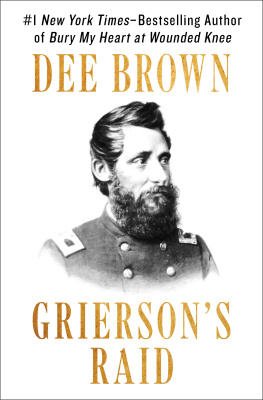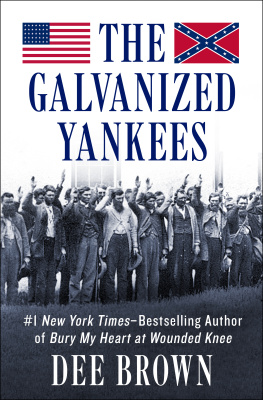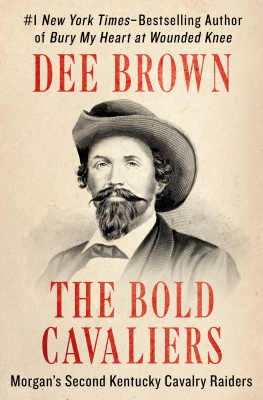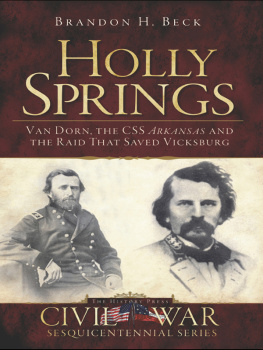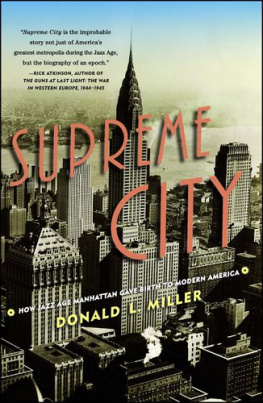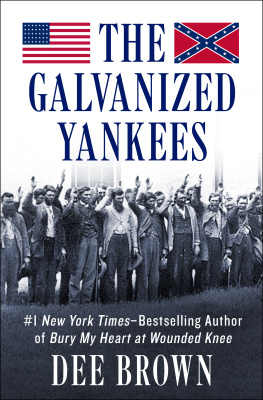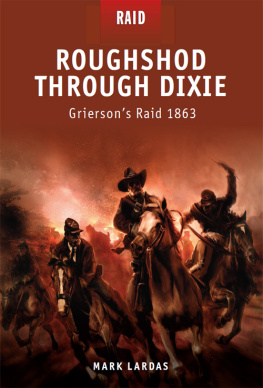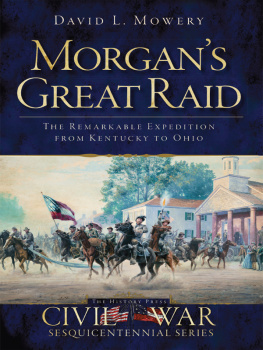
GRIERSONS RAID
Dee Brown



A NOTE ON SOURCES
THIS ACCOUNT IS BASED upon five major sources: Benjamin Henry Griersons manuscript autobiography and the Grierson Papers in the Illinois State Historical Library; his privately published Record of Services Rendered the Government; the Forbes family letters and journals of Stephen Alfred Forbes; Richard W. Surbys Grierson Raids; and the Official Records of the War of the Rebellion.
Griersons lengthy autobiography apparently was in process of revision at the time of his death in 1911. Many sentences and paragraphs in the original manuscript were marked out and extended passages were penciled on the margins. Grierson devoted considerable space to the raid which made him famous, and although he relied heavily upon his official report for these chapters, he also included new material.
In addition he drew from his Record of Services Rendered the Government, a unique document with a fascinating history of its own. While Grierson was stationed at the Old Arsenal in St. Louis, some years after the Civil War, a close friend of Mrs. Grierson visited with them one summer and became interested in the generals adventurous background. The friend was Mrs. Ella L. Wolcott of Elmira, New York, and, using Griersons private and official papers, she compiled a detailed chronological record of his military career. Subsequently, during a long tour of duty at Fort Concho, Texas, Grierson arranged to have this record printed on an army hand-press, which was in use only occasionally for publishing local orders. The type was hand set, and evidently no attempt was made to correct typographical errors. Distribution of the few copies printed was limited to the Grierson family, and it is undoubtedly one of the rarest items of Americana, the only library copies on record being in the Illinois State Historical Library.
The Forbes family letters and the journals of Stephen Forbes, collected and arranged chronologically by Ethel Forbes Scott, are rich sources of information on details of the raid, the cavalry dress and equipment, the weather, the food or lack of it, the countryside through which the raiders passed, the attitudes and emotions of the men before, during, and after the raid, all the various minutiae which help to bring history to life. Both Stephen Forbes and his older brother, Henry Forbes, were sensitive observers and recorders of events, persons, and everything that came into their ken, and many passages of their letters and journals, particularly Stephens, are written with unusual eloquence and beauty. Stephen Forbes later became a naturalist and one of the great scientific writers of his time.
Richard Surbys Grierson Raids was first issued in 1865 as a section of a book which included two other narratives, Hatchs Sixty-four Days March and Adventures of Chickasaw the Scout. It was prepared from a diary kept by the author, who was a sergeant at the time. Surby also used the New York Times report of the raid to fill in details with which he was not familiar. Grierson read the manuscript and pronounced it correct in every particular. Stephen Forbes in 1907 said the Surby account was marred by many typographical errors, especially in place and proper names, but was entirely reliable as to matters which came under the authors personal observation and usually so as to events occurring in his immediate neighborhood.
In 1883 Surby slightly revised his account for publication in the veterans weekly, the National Tribune, and a small edition of this revision was then issued in book form by the Tribune under the title, Two Great Raids, a history of Morgans raid being included in the same volume.
The War of the Rebellion: Official Records of the Union and Confederate Armies contains supporting documentation and is essential for tracing related military operations of the Confederate forces attempting to block Griersons raid, and of General Grants armies moving in conjunction with the raid.
Other useful sources consulted were Stephen Forbess address before the Illinois State Historical Society at its eighth annual meeting, Springfield, Illinois, Jan. 4, 1907, and Henry H. Ebys Observations of an Illinois Boy in Battle, Camp and Prison. Eby borrowed some of his incidents from Wilbur Hinmans Corporal Si Klegg, the same source used by Stephen Crane for The Red Badge of Courage. But he also included some interesting original anecdotes about cavalry camp life in the West. Unfortunatelyfrom this writers viewpointEby was on detached service at the time of the raid.
The following helped to complete the background and clarify some of the episodes in the story: Reports of the Adjutant General of the State of Illinois, 186166; Journal of Mississippi History, volumes 112; Springfield Illinois State Journal, 1863; T. H. Bowman, Reminiscences of an ex-Confederate Soldier; or Forty Years on Crutches, 1904; Albert G. Brackett, History of the United States Cavalry, 1865; E. Merton Coulter, Confederate States of America, 1950; Clement A. Evans, Confederate Military History, 1899; R. R. Hancock, Hancocks Diary: or a History of the Second Tennessee Confederate Cavalry, 1887; Adam R. Johnson, Partisan Rangers of the Confederate States, 1904; George H. Hepworth, Whip, Hoe, and Sword; or the Gulf Department in 63, 1864; Francis T. Miller, Photographic History of the Civil War, 1911; Lyman B. Pierce, History of the Second Iowa Cavalry, 1865; William Forse Scott, Story of a Cavalry Regiment, 1893; Fred Albert Shannon, Organization and Administration of the Union Army, 18611865, 1928; Emory Upton, Military Policy of the United States, 1912.
The drawings at chapter openings are adapted from etchings in Life Studies of the Great Army (1876), a portfolio by Edwin Forbes, who was not related to the two Forbes brothers in Griersons brigade. Photographs have been made available through the courtesy of the Library of Congress, Louisiana State University Archives, Illinois State Historical Society, and Mrs. Ethel Forbes Scott.
The author wishes to express sincere appreciation to Harry E. Pratt, State Historian, Illinois State Historical Library, for his assistance in the search for documents relating to Grierson and the raid. Special thanks are also due Mrs. Marguerite J. Pease, Illinois Historical Survey, University of Illinois, and to Mrs. Ethel Forbes Scott for permission to use material from the Forbes family letters.
A SOUTH BREEZE WAS BLOWING


AT DAWN 1,700 CAVALRYMEN WERE moving south out of the base camp at La Grange, Tennessee, the columns of twos coiling down into the shortleaf pine forests away from the town that had seen no fighting, yet was dying in the backwash of raids and counter-raids of two years of war.
Next page
